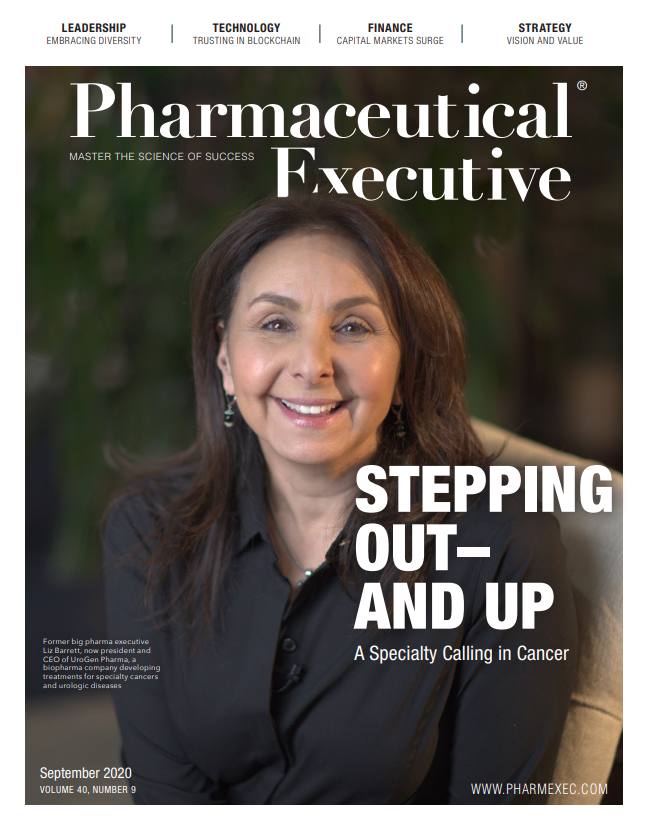Educational Mission: Oxbryta
New hope accompanies overdue recognition in sickle cell disease fight.

In November 2019, FDA granted accelerated approval for Global Blood Therapeutics’ Oxbryta (voxelotor) for the treatment of sickle cell disease (SCD) in adults and children aged 12 and older. An oral therapy taken once daily, Oxbryta is the first approved treatment that directly inhibits sickle hemoglobin polymerization, the root cause of SCD, a disease affecting an estimated 100,000 people in the US and millions more around the world. Six months later, The Motley Fool (May 24, 2020) reported that Oxbryta had “crushed analyst estimates” in its first full quarter on the market, posting $14.1 million in net sales, which was “several-fold higher than the $2.2 million to $5.5 million…predicted by Wall Street analysts.”

The sales results are heartening for a first drug from a company founded (with a focus on SCD) just nine years ago. The journey to launch, however, had to be carefully planned in a disease area that, historically, has not seen its fair share of education or funding. GBT’s sales team was hired and trained well in advance of approval, Chief Commercial Officer David (DJ) Johnson told Pharm Exec. Having received 2,000 applicants for 65 sales positions, the company could afford to be “very choosy and picky” about who was hired—the abundance of applicants allowed GBT to appoint candidates who didn’t just have great sales skills, but in many cases had specific hematology experience as well. It was also vital that the new recruits could “align extremely well with GBT’s culture, mission, and values.” The company has strong connections with the SCD community and with advocacy groups, for example, so field employees are required to support and strengthen those connections. “They are not your typical salespeople,” says Johnson, “they’re more like community advocates.”
Education around SCD is an ongoing priority for GBT. “I view SCD as the disease that time forgot,” says Johnson. Thankfully, he adds, things are starting to change. “There’s more hope now than perhaps there has ever been, in the sense that companies are investing, there’s a recognition of the unmet need, and education is starting to happen.”
David Johnson

GBT will continue to expand its education efforts around patients, healthcare providers, and advocacy groups, the latter being a key consideration for the company. As Johnson explains, “In the US market especially, there’s great skepticism in the black community, for very good reason, about healthcare in general, and about how the government and the industry have somewhat left them behind.” He continues: “In SCD, the number one drug was hydroxyurea, an old, repurposed chemotherapeutic drug that wasn’t even developed for the disease. The community has been asking, ‘Why hasn’t anyone developed a drug for us like they have for, say, cystic fibrosis patients?’”
Ted Love, GBT’s CEO, and the company’s scientists “recognized early on that raising hemoglobin and decreasing the homolysis and destruction of red cell markers is an approvable endpoint, is valuable to patients, and ultimately should lead to significant clinical benefit,” says Johnson. “A lot of people thought very narrowly about hemoglobin being the only value we can provide patients and said we would never get approval. Of course, FDA saw it very differently and approved Oxbryta in record time under an accelerated approval pathway. We’re hearing now that people are excited about having new and innovative products that are specifically for sickle cell patients. So we have to go the extra mile to build trust in the community and maintain it.”
The timing of Oxbryta’s launch ended up coinciding with the COVID pandemic, and this inevitably had an impact in the field. Patient appointments were canceled early on and educational activities were curtailed for a while. “We’re through that now,” says Johnson. “Virtual technology and telemedicine have now been adopted by almost every sickle cell treater in the US. And we’re back to hosting major educational events online.” He adds, “We had to adapt, and we were able to do that quickly. If this situation continues, we’re ready for it.”
In April, the company established the GBT Community Fund through which it provided $150,000 in grants for US non-profit organizations supporting the acute needs of patients and their families during the crisis. The company also made a donation of $100,000 to the Sickle Cell Disease Association of America (SCDAA) in response to its urgent call for a COVID-19 Emergency Fund.
Oxbryta’s first months on the market would also coincide with news of the death of George Floyd in Minneapolis and the subsequent international outrage. In SCD, the Black Lives Matter message resonates with the historical neglect of the disease. Around 90% of the 100,000 people affected with SCD in the US are African American or of African descent. The issues surrounding Floyd’s death and its aftermath are strongly pertinent for GBT; CEO Love is African American and more than half the company’s staff are people of color. In June, GBT convened an online forum for staff, which in a LinkedIn post Love said, “underscored for me how important it is to connect with each other and share our raw emotions and experiences.”
Education around sickle cell disease is an ongoing priority for Global Blood Therapeutics.

He further described how his emotions “have ranged from rage to sadness to focusing on how we drive change,” adding, “[we] will not let this situation impair our determination to fight for social justice and improve the lives of people of color.”
For Johnson, the journey toward new treatments for SCD has parallels with the early fight against HIV, “when there was more unknown than known.” Johnson was involved with launching the first HIV products at GlaxoSmithKline (back when it was Burroughs Wellcome and then Glaxo Wellcome) and at Gilead Sciences. “Patients were dying terrible deaths, but some of the new therapies offered a glimmer of hope. By the time I left Gilead, patients weren’t dying of HIV anymore, or they didn’t have to.” He explains, “SCD patients are suffering greatly, and we want to change the course of SCD so patients no longer die prematurely from the disease. We’re excited not only in the work that we’re doing, but also what other companies are finally doing in SCD.”
GBT is looking now to expand into Europe, where there are around 55,000 SCD patients. The company plans to submit a marketing authorization application to the European Medicines Agency (EMA) for Oxbryta by the middle of next year. It is also planning to expand the drug’s label down to pediatric populations younger than age 12 in the US. “That’s really important because you want to stop the damage before it happens.” adds Johnson. “We’re coming up with a new formulation that will be much easier for kids to take.”
Beyond that, GBT wants to move into Sub-Saharan Africa, “where the bulk of the patients are suffering.” Says Johnson, “We’re working with the World Health Organization; we’re talking to the Gates Foundation; we’re even talking with some of my old colleagues at Gilead Sciences, who were so successful at getting HIV medication used in Sub-Saharan Africa.”
Johnson concludes, “There are going to be some incredible breakthroughs, and Oxbryta will be part of that.”
Julian Upton is Pharm Exec’s European and Online Editor. He can be reached at jupton@mjhlifesciences.com.

The Misinformation Maze: Navigating Public Health in the Digital Age
March 11th 2025Jennifer Butler, chief commercial officer of Pleio, discusses misinformation's threat to public health, where patients are turning for trustworthy health information, the industry's pivot to peer-to-patient strategies to educate patients, and more.
Navigating Distrust: Pharma in the Age of Social Media
February 18th 2025Ian Baer, Founder and CEO of Sooth, discusses how the growing distrust in social media will impact industry marketing strategies and the relationships between pharmaceutical companies and the patients they aim to serve. He also explains dark social, how to combat misinformation, closing the trust gap, and more.